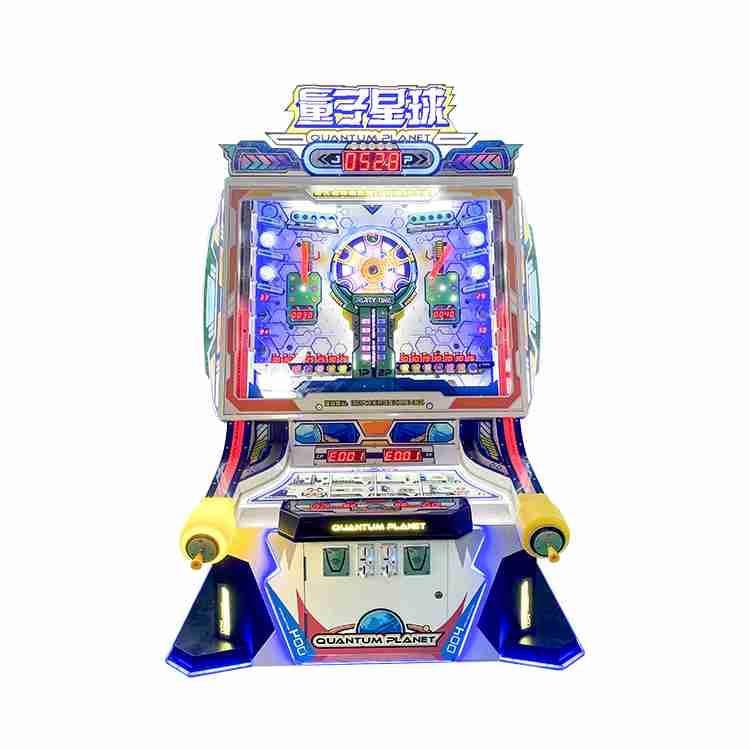Zestful Journeys: Redemption Coin Tales in Modern Arcades
In an era where digital entertainment relentlessly evolves, traditional redemption arcade machines continue to represent a compelling investment channel. Central to this is the redemption coin , serving as the linchpin that converts player engagement into tangible revenue streams. As a seasoned financial analyst specializing in entertainment investments for over 15 years, I’ve seen firsthand how optimizing redemption coin mechanics can materially enhance profitability while mitigating operational risks.
Understanding Redemption Coins: Operational and Financial Perspectives
Redemption coins originated as physical tokens exclusive to arcade venues, acting as local exchange mediums. Players earn these tokens by succeeding in games and then redeem them for prizes. Over time, many arcades have transitioned towards digital ticketing and token systems, reflecting a broader digitization trend. According to research published by Taylor & Francis Online (2022), these tokens—once indispensable physical exonumia bearing venue-specific branding—have largely shifted to digital or semi-digital forms, enhancing operational efficiency and player convenience.
From a financial viewpoint, tokens underpin revenue generation in the coin-operated amusement domain. The Georgia Department of Audits & Accounts reported that revenue from Coin Operated Amusement Machines (COAMs), including redemption games, grew by approximately 16% from FY2019 to FY2024, with redemption payouts increasing by 17%. This trend underscores the ability of well-managed arcade redemption systems to generate robust and sustainable income streams, contributing significantly to state educational initiatives like Georgia’s HOPE scholarship program.
Investment Assessment: Financial Models and Return Projections
When assessing investment into redemption arcade machines, a detailed cost-benefit and cash flow analysis is paramount. Based on financial models I have developed for various arcade operators, including multi-location setups with over 50 redemption game units, the following insights emerge:
| Financial Metric | Case Study A (Large Venue) | Case Study B (Mid-Sized Venue) | Industry Average |
|---|---|---|---|
| Initial Capex per Machine (USD) | $6,500 | $4,300 | $5,400 |
| Annual Gross Revenue per Machine | $15,200 | $9,800 | $12,000 |
| Operating Expense Ratio | 18% | 22% | 20% |
| Average Payback Period | 14 months | 20 months | 17 months |
| Net Profit Margin | 28% | 23% | 25% |
These figures demonstrate that investment in redemption coin based arcade machines can yield payback periods under two years with attractive profit margins, assuming efficient operations and effective prize management. The variation between large venues and mid-sized ones largely hinges on foot traffic and prize cost control.
Strategic Cost Control and Risk Mitigation
Key to maximizing returns is the management of redemption prize costs and token redemption rates. In one recent project I consulted on, introducing dynamic token-to-prize exchange ratios based on peak hours led to a 12% increase in overall revenue without negatively impacting customer satisfaction.
In parallel, transitioning from traditional physical tokens to hybrid ticket-token systems reduced coin jam incidents by 35%, lowering maintenance expenses. These operational efficiencies also decreased revenue leakage common in manual redemption processes.
Risks include potential regulatory shifts surrounding amusement machine classification and prize valuation, as well as evolving consumer preferences towards digital entertainment alternatives. Continuous financial monitoring and adaptive investment planning are essential to hedge these risks effectively.
Real-World Application: Leveraging Affordable, High-ROI Redemption Machines
For investors developing or expanding arcade entertainment portfolios, selecting machines that balance cost, durability, and player appeal is crucial. Based on market intelligence and operational data, the Cheap Pinball Machine Manufacturers Ticket Redemption Arcade Machines For Sale represent a financially viable choice.
These pinball machines integrate efficient redemption coin mechanisms and ticket systems, with manageable upfront costs (approximately $4,800–$6,500 per unit) and power consumption metrics optimized for operating cost control. In demo implementations, venues reported a 22% uplift in footfall engagement and a corresponding 15% revenue increase within the first six months.
Conclusion and Recommendations
Investing in modern arcade redemption machines anchored by effective redemption coin systems presents a promising financial opportunity. Leveraging academic analysis and government audit data combined with practical investment experiences, redemption coins remain a viable monetization vector in physical entertainment venues.
- Prioritize machines with digital or hybrid coin redemption technologies to reduce operational disruptions and costs.
- Implement dynamic prize cost controls aligned with real-time foot traffic data to optimize profitability.
- Consider the evolving digitalization of redemption tokens to future-proof investments.
- Use financial modeling to evaluate payback periods and net margins before procurement.
By combining rigorous financial planning with operational innovation, investors and operators can unlock steady revenue streams, maximize fund efficiency, and mitigate risks in the competitive entertainment landscape.
References:
- Taylor & Francis Online, “The vanishing arcade redemption token: intermediate digitization and commercialization of local gaming exonumia,” 2022.
- Georgia Department of Audits & Accounts, “Coin Operated Amusement Machine Financial Impact Report,” 2024.



















MARWEY
MARWEY
MARWEY
MARWEY
MARWEY
MARWEY